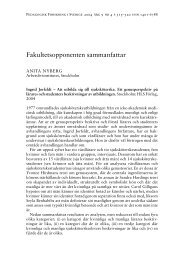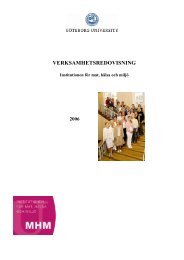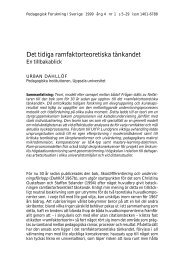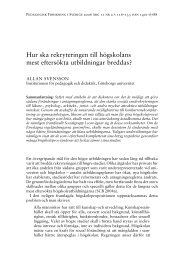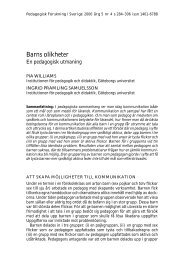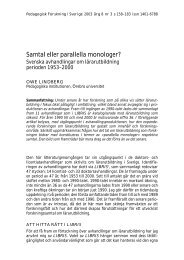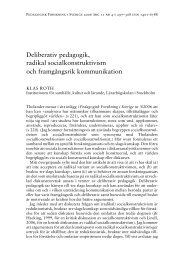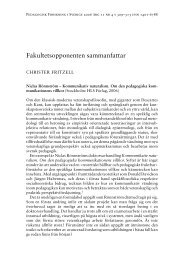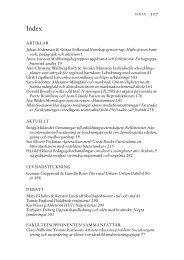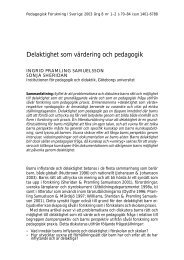University of Oslo Workshops June 29-30 Conference July 1-3 ...
University of Oslo Workshops June 29-30 Conference July 1-3 ...
University of Oslo Workshops June 29-30 Conference July 1-3 ...
You also want an ePaper? Increase the reach of your titles
YUMPU automatically turns print PDFs into web optimized ePapers that Google loves.
Track D TIMSS/PIRLS - Session 2<br />
Sampling strategies<br />
1 <strong>July</strong><br />
13:<strong>30</strong>-15:<strong>30</strong><br />
Room: AK 2135<br />
Chair: Chair: Petra Lietz<br />
Discussant: Ingrid Munck<br />
Examining the Components <strong>of</strong> Linking Error <strong>of</strong> Trend Estimation in PIRLS<br />
Gabrielle Stanco, Boston College, USA<br />
Michael Martin, Boston College, USA<br />
Ina Mullis, Boston College, USA<br />
This study explores the issue <strong>of</strong> linking error in estimating trends, or changes in<br />
achievement over time. TIMSS and PIRLS, as well as other large-scale assessments,<br />
measure trends through linking successive assessments. As part <strong>of</strong> documenting the<br />
changes in student achievement from each assessment cycle to the next, the results are<br />
reported together with their standard errors. Typically, the standard errors incorporate a<br />
component due to sampling variance and a smaller component resulting from the use <strong>of</strong><br />
plausible values and conditioning (imputation variance). More recently, there has been<br />
research investigating the variance resulting from updating the item pool from assessment<br />
to assessment. This research examines the variance components in linking the 2001 and<br />
2006 PIRLS assessments focusing on the variance due to changes in the items from one<br />
assessment to the next. Since many items were in common between the two PIRLS<br />
assessments, this represents a relatively small change, and the associated variance is<br />
expected to be correspondingly small.<br />
Keywords: linking error; trend estimation; international<br />
The Design Effect <strong>of</strong> Two-Stage Stratified Cluster Sampling<br />
Tsung-Hau Jen, National Taiwan Normal <strong>University</strong>, Chinese Taipei<br />
Hak Tam, National Taiwan Normal <strong>University</strong>, Chinese Taipei<br />
Margaret Wu, ARC, The <strong>University</strong> <strong>of</strong> Melbourne, Australia<br />
<br />
In this study, a mathematical formula was provided to estimate the lower boundary <strong>of</strong> the<br />
error variance for the population mean. In order to verify the validity <strong>of</strong> the formula, we<br />
used the formula to estimate the error variances <strong>of</strong> science achievement for 8th graders in<br />
seven TIMSS 2007 participating countries and compared the results with those estimated<br />
by using the jackknife replication technique as discussed in the international report. The<br />
preliminary results indicated that the standard errors estimated by using the formula<br />
provided in this study are very close to those that were estimated by using the jackknife<br />
replications technique. Detailed derivation <strong>of</strong> the formula and future direction <strong>of</strong> study will<br />
be presented in the full paper.<br />
26



